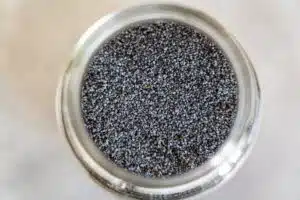Blueberry, Gojiberry or Wolfberry, Cranberry and Strawberry, whether fresh or dried berries are all excellent superfruit berry choices. It is vital to consume a variety of fresh or dried berries, superfruit berries, in order to reap the benefits of the various vitamins and minerals these fruits provide. Is this, on the other hand, scientifically, correct? If you look closely, you will notice that there are certain differences. Berries are naturally sweet and juicy, low in sugar and high in nutrients, making them one of the healthiest foods that can be consumed. They are also high in antioxidants and fibre, all of which help to reduce the risk of chronic diseases, thus appropriately named as ‘superfruit’ berry. Berries come in a variety of forms, including dried berries, which can be ingested. Wolfberry is one such example of a dried berry.
Other berries such as blueberries, whether fresh, frozen or dried blueberries, provide a plethora of nutrients that make them a nutritious complement to a well-balanced diet. Dried blueberries, the superfruit berry, are a fibre-rich and pleasant snack. The tiny, delicious, dehydrated berries are very enjoyable to consume. They’re a tasty snack on their own. Their vibrant hue makes even the most basic meal presentations more enticing. This superfruit berry is a popular element in the world of gastronomy due to its rich purple colour and exquisite flavour. Cranberry, another superfruit berry, is high in antioxidants and anti-inflammatory characteristics, making it a beneficial addition to your diet to support immunity and healthy skin. A packet of dried cranberries is an excellent addition to the diet. Other superfruit berry choices are strawberry, gojiberry or wolfberry.
Below are the powerful superfruit berry choices that must be incorporated into the diet.
BLUEBERRY
Blueberries, whether fresh or dried berries, with their delightful flavour, have always been intriguing to us, haven’t they? But, little did we know that beneath this modest gem lurked a plethora of health benefits that could benefit us. Blueberries are a class of perennial flowering plants with blue or purple berries scientifically known as cyan coccus. They are sweet, tangy and meriting of the title “beauty food.” Blueberries both highbush (taller cultivated bushes) and lowbush (low level bushes) are native to America.

HEALTH BENEFITS –
Along with its beauty, this superfruit berry also has several health benefits. These berries have gained the title of a superfruit berry and is high in nutrients such as fibre, vitamin K, vitamin C, iron, and manganese.
§ As an antioxidant –
The superfruit berry’s colour also plays an important role here as the purple-blue colour indicates that the fruit is abundant in antioxidants. The colour is derived from anthocyanin, a naturally occurring pigment that acts as an antioxidant and is beneficial to both vision and blood pressure.
§ Antibacterial and Antifungal action–
Blueberries also contain resveratrol, which is a phytoalexin produced by plants when they are infected with bacteria or fungi. Phytoalexins are antibacterial and antifungal compounds produced by plants to defend them against infections.
§ Benefits in preventing cancer –
Blueberries’ phytochemicals, such as tannins, flavanols, anthocyanins, and proanthocyanins, have been shown to prevent some of the ways cancer cells grow and proliferate. They have been found to prevent carcinogenesis by inhibiting the synthesis of pro-inflammatory chemicals, oxidative stress and its consequences such as DNA damage, inhibiting a large number of cancer cells, and increasing death in the growing cells.
§ Heart Health –
Research and studies are also being conducted to prove that this superfruit berry help in the prevention of hard endpoints like heart attacks, which is the world’s leading cause of death (https://www.who.int/en/news-room/fact-sheets/detail/the-top-10-causes-of-death). Anthocyanin-rich foods, such as blueberries, have been linked to a lower risk of cardiovascular disease.
§ Inhibit urinary tract infections –
Blueberries have chemicals that can inhibit certain germs from adhering to the bladder wall, which may aid in the prevention of urinary tract infections.
§ Improve brain health and as anti-ageing –
Not only chronic diseases but blueberries can aid in the maintenance of brain function and the improvement of memory too.
Today we see people facing a lot of stress issues where forgetting everything acts as a major symptom. Oxidative stress can hasten the ageing process of the brain, impairing its function. Antioxidants in this superfruit berry or dried blueberries appear to help ageing neurons, resulting in improvements in cell signalling. As a result, this superfruit berry reduces dementia symptoms and improves cognition in Alzheimer’s patients.
NUTRITIONAL CONTENT –
Blueberries nutrients include 14% carbohydrates, 0.7% protein, 0.3% fat and 84% water. A 100-gram portion has a low-calorie content of 57 kcal and a glycaemic load of 6.
HOW TO INCLUDE IT IN THE DIET –
It can be included creatively in the diet simply by blending it in a nourishing smoothie, flavoured geek yoghurt/ ice cream, making them a part of the oatmeal, pancakes, waffles, salads, making flavoured jams and jellies. The blueberry can be simply enjoyed as a delicious fruit, the dried blueberry also adds a great flavour and all the other medical benefits are just a bonus.


GOJIBERRY or WOLFBERRY
In recent years, it appears that the trend has been to go to ancient medicine to develop modern remedies and to discover the next superfood. Gojiberry or Wolfberry here works as a magical nutritious delight.
For more than 2,000 years, people in Asia have been eating the gojiberry. This berry along with a unique name is one of the traditional foods that is garnering a lot of attention and marketing these days. Gojiberry or wolfberry stands by the scientific name of Lycium barbarum and is native to Asia. For thousands of years, they’ve been employed in traditional medicine because of the sweet and sour gojiberry taste and brilliant red colour. Wolfberries or Gojiberry are most commonly seen dry. The rectangular, crimson berries are sensitive when ripe and must be picked carefully or shaken from the vine into trays to avoid rotting. The fruits are preserved by drying them in the sun on open trays or by mechanical dehydration, which involves a 48-hour series of increasing heat exposure.

HEALTH BENEFITS –
Based on research, gojiberry or wolfberry offer several health benefits.
§ Increase Immunity –
Immunity has become an important factor in contributing to our health, isn’t it? Gojiberry or wolfberry has an anti-inflammatory effect on several immune system components, including T cells, B cells, macrophages, and lymphocytes. This superfruit berry is high in antioxidants, which help to improve the immune system. The berries give the body the ability to combat free radicals and inflammation. They are high in vitamins A and C, which are essential for the development of the human body’s immune system. A strong immune system aids in the battle against many infections.
§ As an antioxidant –
The antioxidants found in these superfruit berries can help to limit tumour growth, reduce inflammation, and flush out dangerous compounds from the body.
§ Anti-ageing on the skin –
As adults or even older people, we all want our skin to glow or look as it did when we were young and the anti-ageing effects were one of the initial uses for these extraordinary berries. Other beneficial effects of gojiberries originate from beta-carotene, a vital plant phytochemical. Beta-carotene promotes healthy skin by preventing skin irritations, slowing the ageing process, and reducing the detrimental effects of the sun. Antioxidants help our skin maintain moisture and renew cells efficiently, resulting in a soft, young appearance. Wolfberry also aids in the reduction of acne, the synthesis of collagen, and the evening of skin tone.
§ Protect eyes –
Gojiberry/ Wolfberry are also high in antioxidants such as zeaxanthin, which helps protect your lenses and retinas from damage. (https://www.ncbi.nlm.nih.gov/pmc/articles/PMC6343173/).
§ Protects liver –
Gojiberry/ Wolfberry has also been used to treat liver diseases by Chinese traditional medicine practitioners for millennia. These berries are useful for treating liver health issues, such as decreasing the progression of alcohol-induced fatty liver disease.
§ Lower blood sugar and improve good cholesterol –
Gojiberry or Wolfberry contain LPB (Lycium barbarum polysaccharide), a substance that helps diabetic individuals lower their blood sugar while also increasing HDL levels i.e., good cholesterol.
NUTRITIONAL CONTENT –
The nutritional content provided by these berries is 59 calories, sodium 50mg, carbohydrates 13g, fibre 2.2g, sugars 7.7g, protein 2.4g. The applications for goji berries are as diverse as they have always been.
HOW TO INCLUDE IT IN THE DIET –
Gojiberry / Wolfberry can be consumed fresh or by soaking in hot water before eating. They can also be added to trail mixes, smoothies, or as a garnish on cereals, salads, or yoghurt. They can be eaten fresh, uncooked, or dried and are used to flavour beverages, smoothies, oats, puddings, granola bars and other delicacies. One of the most nutrient-dense superfruit berries, these beauties are a must-have!

CRANBERRIES
A common name that has hidden healing properties, cranberries are small, hard, spherical, red fruits having a mix of bitter and sour flavours. They are found in the northern United States and southern Canada, where they grow on vines in freshwater bogs. The scientific name for this berry is oxycoccous. Dried Cranberries are highly rich in antioxidants.

HEALTH BENEFITS –
These small superfruit berries offer a number of different health benefits.
§ Treatment of urinary tract infections –
Cranberries were used in the treatment of urinary tract infections in the past. A-type proanthocyanins, also known as condensed tannins, are unique phytonutrients found in cranberries. The A-type proanthocyanins, prevent E. coli from sticking to the lining of your bladder and urinary system, making them a potential UTI preventive measure. (https://pubmed.ncbi.nlm.nih.gov/16055161/).
§ Heart healthy –
Cranberries, in particular the A-type, are one of the best fruit sources of proanthocyanins. The polyphenols present helps to lower the risk of cardiovascular disease (CVD). Including fresh or dried cranberries in one’s diet can help with a variety of CVD risk factors. The systolic blood pressure, which is the blood pressure during a cardiac muscle contraction, is one of them.
§ Gut Healthy –
Cranberries, whether fresh or dried cranberries are also beneficial to gut health. They have the potential to improve people’s gut microbes. They aid in the reintroduction of beneficial bacteria into the digestive tract. They also lower bile acids in the gut, which have been linked to colon and gastrointestinal malignancies.
§ Benefits for gums and teeth –
Ever thought that a tiny berry could help keep your mouth healthy and fresh? Cranberries help to keep your mouth healthy and aid in the management of toxic acids in the mouth. Cranberries reduce the amount of acid produced and prevent it from adhering to your teeth. This aids in the prevention of cavities, gum disease, tooth decay, and even oral cancer.
§ Increase healthy cholesterol and reduce blood pressure –
Cranberries help in increasing HDL good cholesterol levels, lowering LDL bad cholesterol levels in diabetics, protecting LDL bad cholesterol from oxidation, decreasing stiffness in blood vessels in people with heart disease, lowering blood pressure, and decreasing blood levels of homocysteine, thereby lowering the risk of blood vessel inflammation.
NUTRITIONAL CONTENT –
Cranberries contain 46% calories, 0.4g protein, 12.2g carbohydrates, 4g sugar, 4.6g fibre, 0.1g fat.


HOW TO INCLUDE IT IN THE DIET –
Cranberries can be eaten in various ways, as a whole, tossed into a fresh salad, or mixed into healthy oatmeal. It can be blended into juices, and smoothies too. Jelly or sauce can also be made out of them. Trail mix can be created with dried cranberries. It can be incorporated as dried or fresh cranberries into muffins or cookies. Fresh cranberries can be used in a dessert, such as a pie or tart. Always providing a tasty and nutritious flavour to savour.
STRAWBERRIES
There isn’t a single application where strawberries don’t give their sweet taste and brilliant colour, from sweets, milkshakes, and pastries to jams and jellies and the summertime favourite strawberries and ice cream. Strawberries, whether fresh or freeze-dried strawberries, are not only delicious, but are also quite healthy. At only 30 calories per 100g, the fruit is high in phytonutrients, antioxidants, minerals, and vitamins, which assist to prevent premature ageing while also supporting digestive and cardiovascular health. Strawberries are high in fibre, folic acid, and potassium, in addition to being an excellent source of vitamin C. The scientific name for strawberry is Fragaria × ananassa.

HEALTH BENEFITS –
Strawberries are low in calories, tasty, and nutritious. They include a variety of vitamins, minerals, and plant chemicals, some of which have great health effects.
§ As an antioxidant –
It ranks as one of the highest among fruits in terms of antioxidant power, which fights free radicals and protects against inflammation, cancer, and heart disease.
§ Heart healthy –
Reduced cholesterol, blood pressure, inflammation, and oxidative stress are among the health benefits. Furthermore, fresh or freeze-dried strawberries aid in the prevention of large rises in blood sugar and insulin levels. (https://pubmed.ncbi.nlm.nih.gov/19930765/).
§ Boost memory –
The anthocyanins present in strawberries boost short-term memory.
§ Prevent cancer –
These berries indicate the potential of freeze-dried strawberry powder for preventing human oesophageal cancer.
§ Bone healthy –
Strawberries include potassium, vitamin K, and magnesium, all of which are beneficial to bone health.
§ Healthy hair and nails –
They include biotin, which aids in the development of healthy hair and nails.
§ Prevent sagging skin –
Strawberries also contain the antioxidant ellagic acid, which helps to prevent sagging by protecting the elastic fibres in our skin.
§ Improves blood flow –
The nitrate compound present in strawberries improves blood flow and oxygen in our bodies, which aids in weight loss. Anthocyanins, which are present in the red colouring, increase the combustion of stored fat.
NUTRITIONAL CONTENT –
Strawberries provide 32 calories. water comprises 91% of the total. 0.7 g protein, carbohydrates 7.7 g, 4.9 g of sugar, 2 g fibre and 0.3 g of fat.
HOW TO INCLUDE IT IN THE DIET –
Strawberries, fresh or freeze-dried strawberries, or prepared as the freeze-dried strawberry powder can be added to the diet by making them a part of smoothies, jams, jellies, and salad desserts like pastry, and tarts. This superfruit berry adds an amazing colour, flavour and texture to the food. Strawberries are an excellent method to diversify your diet.


Although the benefits of a berry-rich diet are substantial, the number of berries required to observe many major impacts can be challenging to achieve. In addition to being delicious, these superfruit berries can be prepared in a number of ways. Experimenting with adding fresh berries to everyday diet can help cure a variety of health problems. The advantages are certain to astound you.





